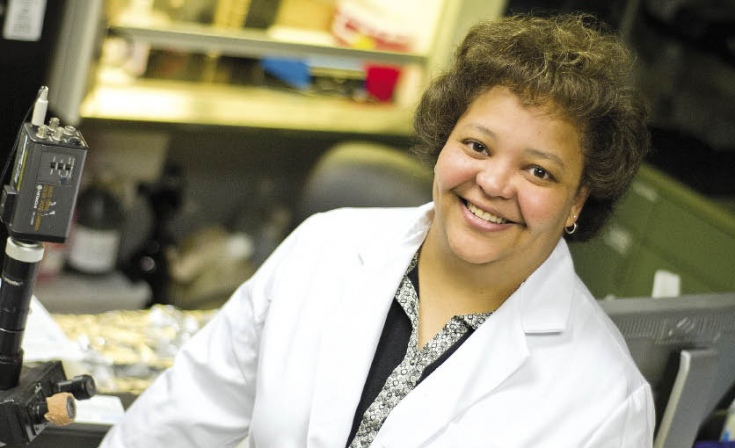
Bone Breakthrough
Study yields unexpected results about the interaction between bone cells and blood vessels
Spring 2012 · Comment ·
Our understanding of bones just took a leap forward, thanks to a study by kinesiology Assistant Professor Rhonda Prisby.
Dr. Prisby and a team of French and Canadian scientists analyzed the effects of parathyroid hormone (PTH) on bone blood vessels. PTH, which is often used to treat osteoporosis, binds to bone cells to stimulate bone mass growth. The researchers examined the interaction between the hormone and vascular endothelial growth factor, a protein that creates new blood vessels.
“When we administered PTH intermittently for 15 and 30 days, we saw increases in bone mass, just as we expected,” Prisby says. “But bone blood vessel numbers were decreased with PTH. That was the opposite of what we expected.”
In fact, the PTH caused small blood vessels in the bones to redistribute closer to the surface, thus allowing them to more efficiently deliver nutrients and oxygen and eliminate waste. This redistribution of the small blood vessels contributed to the increased bone mass, the team concluded.
The study has drawn notice. A paper outlines the research in a recent issue of the Journal of Bone and Mineral Research, the official publication of the American Society for Bone and Mineral Research. That same issue also features a commentary by Dwight A. Towler, the Ira M. Lang Professor of Medicine for Barnes-Jewish Hospital at Washington University Medical Center.
“This unparalleled, quantitatively robust analysis of bone vascular anatomy and its regulation by PTH has provided truly novel insights,” Dr. Towler writes, adding that such research is important because a better understanding of bone-vascular interactions could impact strategies on building new bone in everything from cancer cases to old age.




















